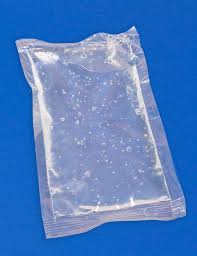Gel ice packs

Gel ice packs, also known as cold packs, have emerged as a modern alternative to traditional ice bags. They serve various purposes such as reducing body temperature, transporting medications, food items, and flowers, and addressing emergency pain from sports injuries.
Unlike conventional ice bags, gel ice packs have gained popularity due to several advantages:
- Soft texture and appealing appearance.
- Effective inhibition of bacterial growth.
- Enhanced effectiveness compared to ice (with a specific heat capacity 3-4 times higher).
The chemical component responsible for the gel-like consistency in ice packs is Sodium Polyacrylate. This superabsorbent polymer has the remarkable ability to absorb substantial amounts of water, transforming into a gel form.
Just 1 gram of sodium polyacrylate can absorb anywhere from 300 to 1000 grams of pure water, making it an ideal ingredient for gel ice packs. The advantages of using sodium polyacrylate include:
- High specific heat capacity.
- Cost-effectiveness for each gel ice pack.
- Non-toxic and environmentally friendly.
Apart from gel ice packs, sodium polyacrylate finds applications across various domains in our daily lives:
- Thermal insulation materials like ice towels and pillows.
- Absorbent materials in products such as paper diapers, sanitary napkins, and nursing pads.
- Water-blocking materials for inflatable sandbags and waterproofing cables.
- Expanding materials used in inflatable toys.

